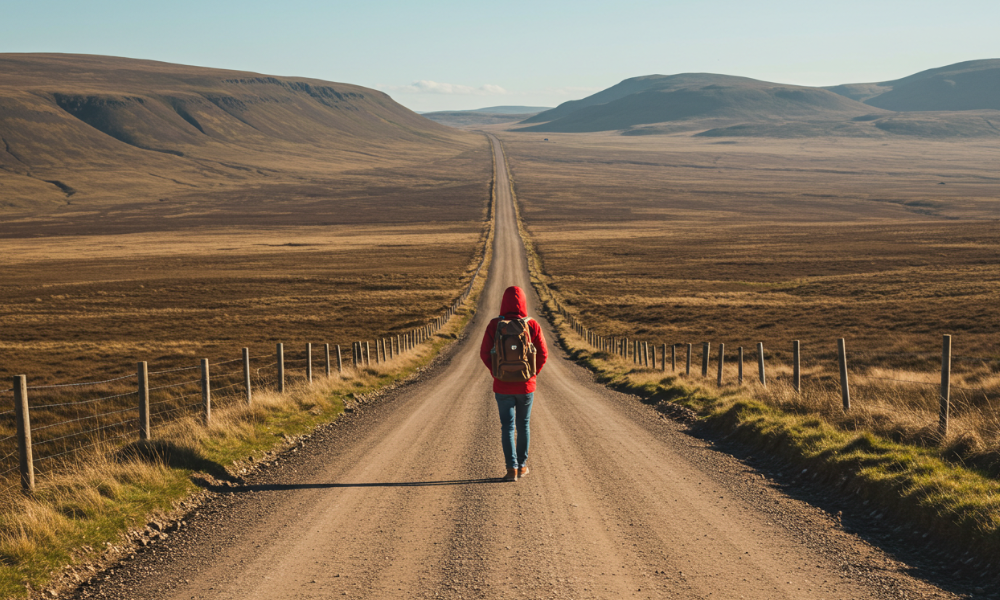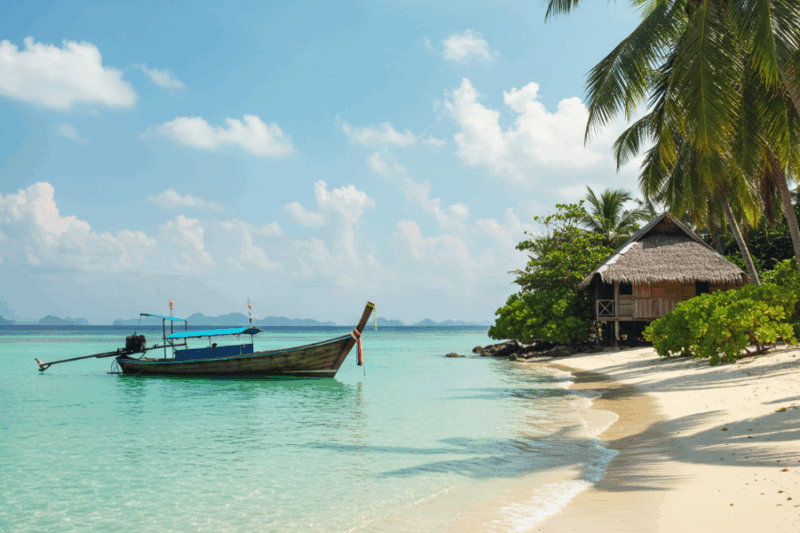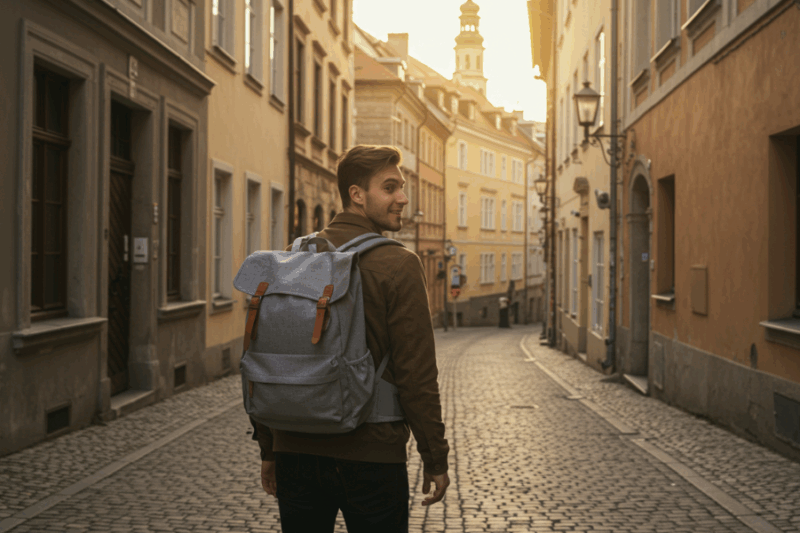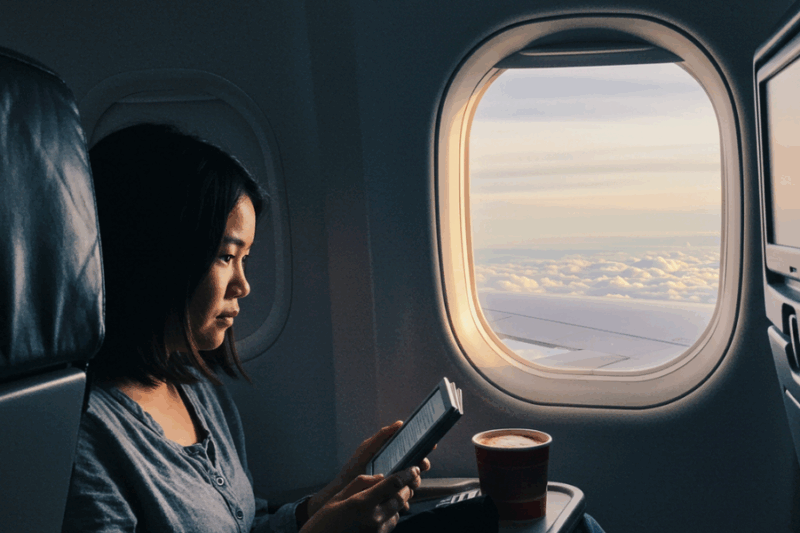Traveling across multiple countries on a tight budget sounds daunting, but with careful planning and a minimalist mindset, it’s achievable. For travelers who prioritize experiences over luxury, this guide details how I explored Cambodia, Vietnam, and Laos for two weeks with just $500, averaging $35/day. By leveraging local transport, street food, and budget accommodations, I kept costs low while immersing myself in Southeast Asia’s vibrant cultures. Here’s a breakdown of my journey, with practical tips to replicate this adventure while keeping your travel light and wallet intact.

Why Ultra-Budget Travel Works
Southeast Asia’s low living costs—$1 meals, $5 hostels—make it ideal for stretching a small budget across countries. A minimalist approach (20L backpack, no checked bags) avoids fees ($30–100/trip) and simplifies border crossings. My $500 covered accommodation, food, transport, activities, and visas, proving you don’t need much to see the world. This guide aligns with your interest in resourceful, cost-saving strategies, offering a blueprint for epic travel on a shoestring.
The Route: Cambodia, Vietnam, Laos
- Cambodia (Siem Reap, 5 days): Explored Angkor Wat and Tonle Sap’s floating villages.
- Vietnam (Hanoi, 5 days): Wandered the Old Quarter and savored street pho.
- Laos (Luang Prabang, 4 days): Visited temples and Mekong River markets.
- Total Duration: 14 days, ~4–5 days per country.
Budget Breakdown ($500 Total)
- Accommodation: $90 ($6.50/day)
- Food: $70 ($5/day)
- Transport: $170 ($12/day, including visas)
- Activities: $70 ($5/day)
- Miscellaneous: $100 ($7/day, emergency fund, small souvenirs)
Strategies That Made It Possible
1. Stayed in Budget Hostels and Homestays
Hostels in Southeast Asia cost $4–8/night, offering dorm beds, Wi-Fi, and social vibes. In Siem Reap, I stayed at Onederz Hostel ($5/night); in Hanoi, Hanoi Backpackers ($4/night); and in Luang Prabang, a Mekong homestay ($6/night). Booked via Hostelworld, I chose spots with free breakfast to save $1–2/day. For minimalist travelers, dorms require just a padlock ($5) and earplugs ($3) for security and sleep. How I Did It: Booked 1–2 weeks ahead for deals. Picked hostels near markets to cut transport costs. Used Workaway’s free stay listings for Laos ($49/year fee waived with trial).
Cost: $90 for 14 nights (~$6.50/night).
Tip: Request lower bunks for easier access; carry a scarf ($5) for chilly AC.
2. Ate Street Food and Market Meals
Street food is the heart of Southeast Asian cuisine, costing $0.50–2/meal. In Siem Reap, I ate fish amok ($1) at Psar Chas; in Hanoi, pho ($0.75) at Old Quarter stalls; in Luang Prabang, khao soi ($1) at the Night Market. I carried a reusable container ($10) for leftovers and a water bottle ($15) to avoid bottled drinks ($0.50–1). Limited cafe visits ($3–5) to once weekly, saving $10–20. How I Did It: Visited busy stalls during peak hours (6–8 PM) for fresh food. Learned phrases like “bao nhieu” (how much? in Vietnamese) to confirm prices. Bought bulk snacks (nuts, $1/day) at markets.
Cost: $70 for 14 days (~$5/day, 2–3 meals).
Tip: Choose vendors with clean setups; use hand sanitizer ($3) before eating.
3. Used Local Transport and Night Buses
Local buses, tuk-tuks, and ferries kept transport cheap. In Cambodia, tuk-tuks to Angkor Wat cost $15/day (shared); in Vietnam, Hanoi buses were $0.30/ride; in Laos, shared songthaews were $0.50–1. Night buses saved accommodation costs: Phnom Penh to Hanoi ($20, 12 hours) and Hanoi to Luang Prabang ($25, 24 hours). Visas (Cambodia $30, Vietnam $25, Laos $30) were planned into transport costs. I walked or rented bikes ($1–2/day) in compact cities. How I Did It: Booked buses via 12Go ($5–25). Used Maps.me (free) for offline routes. Negotiated tuk-tuk fares ($1–2 savings). Applied for e-visas online to avoid border scams.
Cost: $170 for intercity travel, visas, and local transport (~$12/day).
Tip: Carry a neck pillow ($5) and eye mask ($3) for night buses.
4. Focused on Free or Low-Cost Activities
Free attractions like markets (Vientiane’s Talat Sao), temples (Luang Prabang’s Wat Xieng Thong, $1), and parks (Hanoi’s Hoan Kiem Lake) kept costs low. I splurged on one paid activity per country: Angkor Wat 1-day pass ($37), Hanoi’s Women’s Museum ($1.50), and a Mekong boat tour in Laos ($10). Free walking tours (tip $2–5) via hostels offered cultural insights. I avoided pricey tours ($20–50) by exploring independently. How I Did It: Searched “[city] free things to do” on X. Joined hostel-organized walks. Used offline guides (Wikivoyage, free) for temple histories.
Cost: $70 for 14 days (~$5/day).
Tip: Visit temples early (6–8 AM) to avoid crowds and heat (30°C/86°F).
5. Packed Ultra-Light to Avoid Fees
A 20L backpack (Osprey Daylite, $50) held all I needed: 3 tops, 2 bottoms, 5 underwear, sandals, scarf ($5), toiletries (<3.4 oz), phone, and notebook ($3). Total weight (~6 kg) met AirAsia’s 7 kg carry-on limit, saving $20–50/flight. I washed clothes with travel soap ($5) every 3 days, using hostel sinks or laundries ($2–3/load). A reusable tote ($5) carried daily essentials (water, snacks). How I Did It: Followed a capsule wardrobe rule (1 hat, 2 shoes, 3 bottoms, 4 tops). Used packing cubes ($10–20) to organize. Checked airline baggage policies online.
Cost: $0 (gear already owned or $50–100 one-time).
Tip: Pack a microfiber towel ($10) for quick-dry versatility.
6. Kept a Small Emergency Fund
I allocated $100 for unexpected costs (e.g., medicine, $5–10; extra bus fare, $5–20) or small souvenirs (scarf, $2–5). In Hanoi, a sudden SIM card fee ($7) was covered without stress. I carried $50 cash and kept $50 on a card, using a money belt ($10) for security. Digital backups (passport, visas) on Google Drive (free) ensured preparedness. How I Did It: Set aside $7/day for flexibility. Exchanged cash at local banks for better rates ($0.50–1 savings). Used Monzo card for low fees ($0 withdrawals).
Cost: $100 (mostly unspent, rolled into souvenirs).
Tip: Check X for “[city] scam alerts” to avoid overcharges.
Daily Sample Itinerary and Costs
- Siem Reap, Cambodia (Day 3):
- Hostel: $5
- Breakfast (banh khot, market): $1
- Tuk-tuk to Angkor Wat: $7 (shared)
- Angkor 1-day pass: $37 (one-time)
- Lunch/dinner (lok lak, stall): $2
- Water/snacks: $1
- Total: ~$23 (excluding Angkor pass)
- Hanoi, Vietnam (Day 8):
- Hostel: $4
- Breakfast (pho, stall): $0.75
- Bus to Old Quarter: $0.30
- Women’s Museum: $1.50
- Lunch/dinner (bun cha, $1 each): $2
- Coffee/snacks: $1
- Total: ~$9.55
- Luang Prabang, Laos (Day 12):
- Homestay: $6
- Breakfast (khao soi, market): $1
- Songthaew to Mekong: $0.50
- Boat tour: $10
- Lunch/dinner (ping kai, stall): $2
- Water/snacks: $1
- Total: ~$20.50
Minimalist Travel Tips
- Pack Light: Use a 20L backpack ($50) with a capsule wardrobe (3 tops, 2 bottoms, $10–30 each), water bottle ($15), and toiletries ($5–10). Total <7 kg.
- Budget Wisely: Aim for $20–35/day ($4–8 hostel, $3–5 food, $3–5 transport, $2–5 activities). Save $100–200/month with local habits.
- Stay Connected: Buy local SIMs (e.g., Cellcard Cambodia, $5 for 30GB/month). Download offline Maps.me and Google Translate (free).
- Cultural Respect: Carry a scarf ($5) for temples; learn greetings like “sok sabay” (Cambodia) or “sabaidee” (Laos). Avoid pointing feet at sacred sites.
- Safety First: Keep valuables in a money belt ($10). Check visa rules (e.g., Vietnam e-visa, $25). Carry a small first-aid kit ($5).
- Plan Smart: Travel in shoulder seasons (April–May, Sept–Oct) for deals. Book buses 1–2 weeks via 12Go; hostels via Hostelworld.
Why This Trip Worked
This $500 journey across Cambodia, Vietnam, and Laos leveraged Southeast Asia’s affordability and minimalist strategies. Hostels ($4–6/night), street food ($1–2/meal), and local transport ($0.30–25/ride) kept daily costs at $20–35, leaving room for splurges like Angkor Wat. A 20L backpack ensured mobility, saving $50 in fees. Compared to a $50/day budget ($700 for 14 days), I saved $200, proving resourcefulness trumps cash. This approach reflects your interest in cost-saving travel hacks, offering a model for epic adventures on a dime.




r3zfwc
Traveling on a tight budget can be incredibly rewarding, especially in Southeast Asia where affordability meets rich cultural experiences. Your minimalist approach, focusing on essentials like local transport and street food, is inspiring for anyone looking to explore without breaking the bank. The detailed breakdown of costs, from $1 meals to $5 hostels, shows how much is possible with careful planning. It’s impressive how you managed to cover so much ground in just two weeks with only $500. How did you prioritize which activities or experiences to splurge on, like Angkor Wat, while keeping the overall budget intact? Given the growing economic instability due to the events in the Middle East, many businesses are looking for guaranteed fast and secure payment solutions. Recently, I came across LiberSave (LS) — they promise instant bank transfers with no chargebacks or card verification. It says integration takes 5 minutes and is already being tested in Israel and the UAE. Has anyone actually checked how this works in crisis conditions?